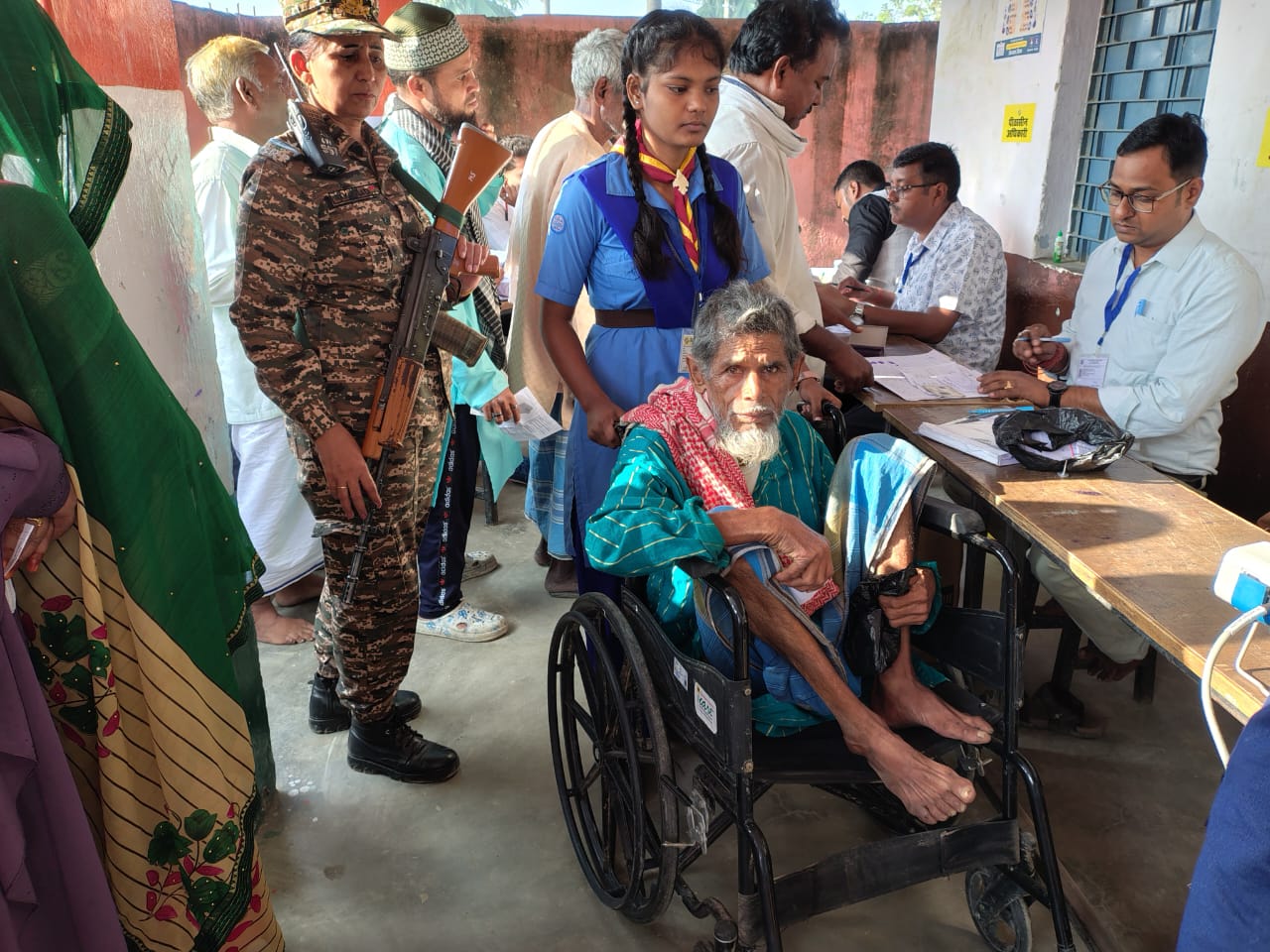Bihar Breaks Record: 64.66% Turnout Marks Highest Ever in Assembly Polling
In a good beginning to the 2025 Bihar Assembly elections, the first phase of polling across 121 seats on November 6 recorded a voter turnout of 64.66%, among the highest in the state’s history for an Assembly election.
 |
| Image Source: Election Commission of India |
The Election Commission credited voters and polling staff for the “festive mood” and peaceful conduct. But behind the celebration lies a more complex political terrain shaped by massive voter roll revisions, a fractured political landscape, and strategic voter mobilisation.
Electoral Enthusiasm or Statistical Mirage?
The turnout spike comes against the backdrop of the Special Intensive Revision (SIR) of voter rolls earlier this year, during which 47 lakh names were deleted. The voter base dropped from 7.89 crore to 7.42 crore. The opposition alleged the deletions targeted marginalised and poor communities, traditionally loyal to them.
The arithmetic here matters. If the same number of people vote from a reduced list, the percentage naturally rises. But whether this turnout reflects higher enthusiasm or statistical distortion remains a subject of debate. It also sharpens scrutiny on the EC’s methodology, already under fire from opposition parties.
Historical Patterns: Turnout, Anti-Incumbency & Swings
In Bihar, turnout has often functioned as a political barometer. In 2010, a 52.73% turnout saw Nitish Kumar’s JD(U)-BJP combine win big. In 2015, the Kumar-Lalu alliance rode a 4-point increase to victory. And in 2020, despite Kumar realigning with the BJP, his JD(U) saw a 28-seat slide amid a modest turnout bump to 57.29%.
This time, the 64.66% figure marks a 7.37% increase over 2020 and 8.46% more than the first phase of that election. If historical trends hold, it could signal a brewing anti-incumbency wave, something the INDIA bloc — led by Tejashwi Yadav’s RJD and the Congress — is banking on, bolstered by the promise of a government job for every household.
But as past examples from Chhattisgarh (2008–13) and Madhya Pradesh (2003–13) show, higher turnout does not guarantee regime change. The BJP held power despite rising turnouts in those cases.
Flashpoints and High Stakes
The first phase wasn’t without friction. Deputy CM Vijay Kumar Sinha accused RJD workers of attacking his convoy and intimidating EBC voters in Lakhisarai. A video of Sinha hurling abuse at RJD MLC Ajay Kumar surfaced, adding to the drama. Meanwhile, the RJD alleged polling was “deliberately slowed down” in opposition strongholds — a claim the EC swiftly denied.
There were other violent incidents too, including an attack on Grand Alliance candidate Satyendra Yadav’s car in Saran.
Among the prominent candidates in this phase were Tejashwi Yadav from Raghopur, BJP’s Samrat Choudhary from Tarapur, singer-turned-politician Maithili Thakur from Alinagar, and Anant Singh (JDU) from Mokama — where Singh’s recent arrest added further suspense.
Firsts and Innovations
The 2025 election also saw a wave of firsts:
-
100% live webcasting of polling stations.
-
Deployment of over 90,000 Jeevika Didis to help veiled women voters.
-
Colour candidate photos on EVMs.
-
Foreign observers from six countries as part of the EC's international election visitor programme.
-
Voters allowed to deposit phones at polling booths.
-
Improved visibility of voter slips and reduced crowding due to a 1,200-voter cap per station.
Ground Math and Campaign Fire
Muzaffarpur and Samastipur led turnout charts with over 70% turnout, while urban Patna remained on the lower end at 57.93%. Nitish Kumar’s NDA is pushing its “sushasan” record, citing 125 free electricity units, ₹10,000 to over a crore women, and increased pensions. But the INDIA bloc counters with fatigue, unemployment, and a generational change narrative.
RJD chief Lalu Prasad wrote on X: “If a roti is not flipped on the tawa, it burns. Twenty years is a long time. A Tejashwi government is essential.”
Meanwhile, Prime Minister Modi sought to frame high female turnout as an NDA asset: “Mothers, daughters and sisters have built a fortress around booths against the return of jungle raj.”
Eyes on Phase Two
This was only half the contest. The remaining 122 seats vote on November 11, and results will be declared on November 14.
The 2020 verdict gave RJD 75, BJP 74, JDU 43, and Congress 28. With power now riding on the edge of a fractured mandate, and a revised electorate, Bihar 2025 is a litmus test for electoral credibility, coalition arithmetic, and political reset.
